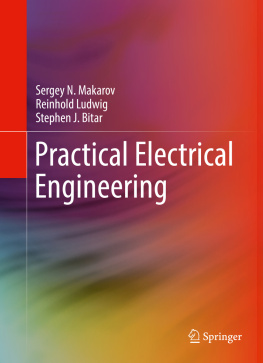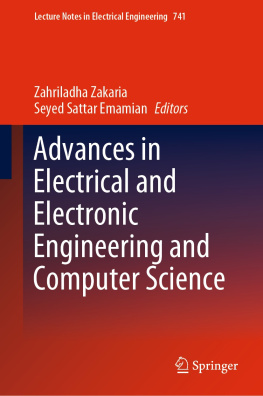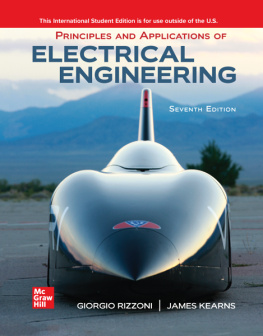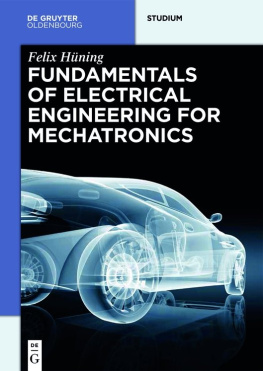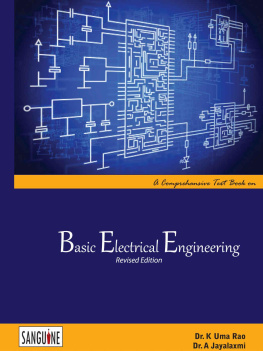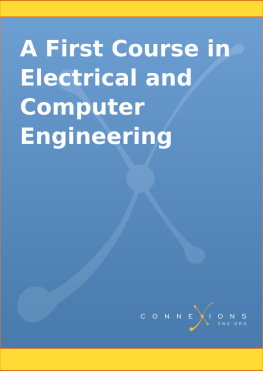Sergey N. Makarov Reinhold Ludwig - Practical Electrical Engineering
Here you can read online Sergey N. Makarov Reinhold Ludwig - Practical Electrical Engineering full text of the book (entire story) in english for free. Download pdf and epub, get meaning, cover and reviews about this ebook. year: 0, publisher: Springer International Publishing, Cham, genre: Computer. Description of the work, (preface) as well as reviews are available. Best literature library LitArk.com created for fans of good reading and offers a wide selection of genres:
Romance novel
Science fiction
Adventure
Detective
Science
History
Home and family
Prose
Art
Politics
Computer
Non-fiction
Religion
Business
Children
Humor
Choose a favorite category and find really read worthwhile books. Enjoy immersion in the world of imagination, feel the emotions of the characters or learn something new for yourself, make an fascinating discovery.
- Book:Practical Electrical Engineering
- Author:
- Publisher:Springer International Publishing, Cham
- Genre:
- Year:0
- Rating:5 / 5
- Favourites:Add to favourites
- Your mark:
- 100
- 1
- 2
- 3
- 4
- 5
Practical Electrical Engineering: summary, description and annotation
We offer to read an annotation, description, summary or preface (depends on what the author of the book "Practical Electrical Engineering" wrote himself). If you haven't found the necessary information about the book — write in the comments, we will try to find it.
Practical Electrical Engineering — read online for free the complete book (whole text) full work
Below is the text of the book, divided by pages. System saving the place of the last page read, allows you to conveniently read the book "Practical Electrical Engineering" online for free, without having to search again every time where you left off. Put a bookmark, and you can go to the page where you finished reading at any time.
Font size:
Interval:
Bookmark:
- Knowledge of university physics: electricity and magnetism
- Show that the electric voltage and the electric potential may be treated as two equivalent quantities
- Define the electric voltagework per unit chargein the form of a line integral and show its independence on the integration path for conservative fields
- Relate voltage to the potential energy of the electric field
- Introduce three-dimensional potential distributions and realize the guiding function of metal wires
- Formulate and understand major conditions of electrostatics of conductors
- Visualize surface charge distributions in the electrostatic case
- Introduce electric current density as a function of the applied electric field
- Visualize steady-state current flow in a single conductor along with the associated electric potential/voltage distribution
- Visualize electric and magnetic-field distributions for a two-wire DC transmission line
- Obtain initial exposure to the Poynting vector
- Realize that electric power is transferred via Poynting vector even in DC circuits
- Indicate a path toward circuit problems where the field effects become important
- Review basic hydraulic (fluid mechanics) analogies for DC circuit elements
- Present major hydraulic analogies for dynamic circuit elements in AC circuits
- Briefly discuss hydraulic analogies for semiconductor components
- Human body subject to applied voltage
- Human body in an external electric field
 ( coulombs ). In electrical engineering, we deal with much larger charges, which, for this reason, are assumed to be infinitely divisible. There are no positive movable charges in metal conductors. Therefore, when we talk about positive charges, it is implied that we have a lack of electrons at a certain location, e.g., at the surface. Oppositely, the negative charge is the excess of electrons at a certain location.
( coulombs ). In electrical engineering, we deal with much larger charges, which, for this reason, are assumed to be infinitely divisible. There are no positive movable charges in metal conductors. Therefore, when we talk about positive charges, it is implied that we have a lack of electrons at a certain location, e.g., at the surface. Oppositely, the negative charge is the excess of electrons at a certain location.

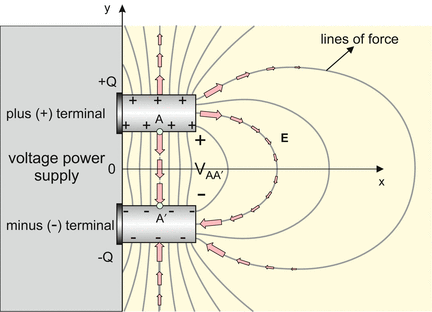
 between points A (#1) and A (#2) is work in joules per coulomb (per unit charge) to bring a positive charge from reference point A (#2) to observation point A (#1), i.e., against the electric fieldsee Fig.. The work per unit charge over a short straight vector distance
between points A (#1) and A (#2) is work in joules per coulomb (per unit charge) to bring a positive charge from reference point A (#2) to observation point A (#1), i.e., against the electric fieldsee Fig.. The work per unit charge over a short straight vector distance 
Font size:
Interval:
Bookmark:
Similar books «Practical Electrical Engineering»
Look at similar books to Practical Electrical Engineering. We have selected literature similar in name and meaning in the hope of providing readers with more options to find new, interesting, not yet read works.
Discussion, reviews of the book Practical Electrical Engineering and just readers' own opinions. Leave your comments, write what you think about the work, its meaning or the main characters. Specify what exactly you liked and what you didn't like, and why you think so.

